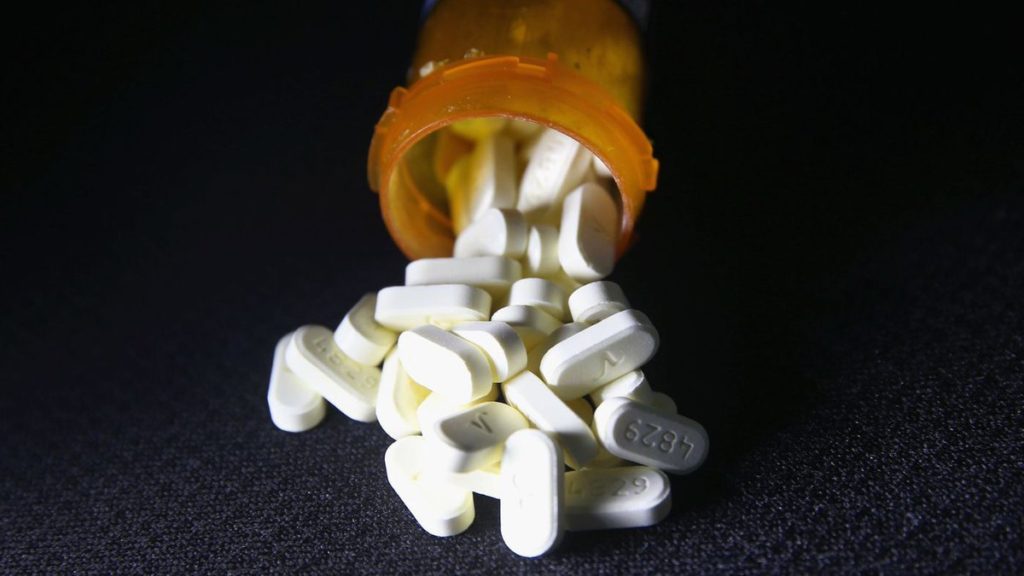Original publication by Simona Kitanovska for newsweek.com on 23 June 2022
Almost half of the world’s rivers are poisoned with over-the-counter and prescription drugs, according to new research.
They range from antibiotics, antidepressants, and painkillers to oral contraceptives, hay fever pills, and tranquilizers.
The River Clyde in Scotland is the most pharmaceutically polluted in the United Kingdom, with epilepsy drug carbamazepine the most common found in nearly 70 percent of British rivers.

JOHN MOORE/GETTY IMAGES
Out of 54 sampling sites in the U.K., drugs were detected in 50, with only four in remote Snowdonia in Wales being clean.
These levels are potentially toxic to humans. Fish and other wildlife are also at risk, endangering ecosystems. Medications that target hormones, for instance, have induced sex changes in marine animals.
The study found more than 43 percent of the sites had “concerning” amounts of active pharmaceutical ingredients (APIs), with 23 exceeding those considered “safe.”
It was based on 1,052 locations in 104 countries across the world, the largest analysis of its kind.
Corresponding author Alejandra Bouzas-Monroy, a Ph.D. student at the University of York, said: “This is the first truly global assessment of the impacts of single pharmaceuticals and mixtures of pharmaceuticals in riverine systems.
“Our findings show a very high proportion of rivers around the world are at threat from pharmaceutical pollution.
“We should therefore be doing much more to reduce the emissions of these substances into the environment.”
They are released into the environment during production, use and disposal. They are most likely to turn up in surface waters such as streams, rivers, lakes, reservoirs and wetlands.
The findings indicate contamination is a global problem that is harming rivers from the Thames to the Amazon.
Bouzas-Monroy said: “Over 1,900 APIs are used to treat and prevent disease in humans. It is inevitable these substances will be emitted to the natural environment.
“There is a growing concern exposure to these APIs can negatively affect the health of ecosystems because they are designed to interact with receptors and biochemical pathways in humans.
“Many are conserved in non-target organisms and have the potential to cause toxicological side effects.”

ALISTAIR MCINTYRE/PIXABAY
Lake studies have shown “the pill” and other synthetic estrogens cause hormone disruption.
Popular painkiller diclofenac resulted in a notable decline in vulture populations on the Indian subcontinent, leading to potential impacts on human health.
Antidepressants have been shown to affect fish behavior, which could upset the food chain by making them more prone to predators.
It is feared the presence of antimicrobial compounds in the environment is contributing to the selection of drug-resistant bacteria, fueling the emergence of deadly superbugs.
Bouzas-Monroy said: “The lack of global API monitoring data means for many regions of the world we have no idea of the level of potential impacts.
“Therefore, we used a unique data set on the concentrations of 61 high-use APIs in rivers from 104 countries to perform the first truly global holistic assessment of their potential ecotoxicological effects.”
The British team found pharmaceutical pollution is contaminating water on every continent. In North America, sulfamethoxazole and caffeine showed the highest concentrations.
A total of 54 sampling locations were selected in the U.K. Drugs were detected in all – apart from four in remote Snowdonia in Wales. The most contaminated was the River Clyde in Glasgow.
The most frequently detected drug in British waterways was carbamazepine prescribed for epilepsy, found at 69 percent of the sites.
Co-author John Wilkinson, also from the University of York, said: “There are 19.5 million people who live across the cities where we did monitoring work in the U.K. – London, Leeds, York, Glasgow, Northern Wales and Belfast. That’s nearly a third of the population.”

SETAC
Availability of ecotoxicity data on APIs has increased significantly in recent years with the pharmaceutical industry becoming more transparent.
Bouzas-Monroy said: “Twenty-three APIs had concentrations for at least one sampling location above concentrations where an effect on organisms might be expected.
“Ten of those identified, including molecules used to treat depression, bacterial infections, epilepsy, and anxiety, as well as hormone treatments and stimulants, were found to be at concentrations of ecotoxicological concern.”
The characterization of the 61 APIs may just be “the tip of the iceberg” as there are almost 2,000 in circulation, the study suggests. The actual impacts on aquatic systems are expected to be higher.
Bouzas-Monroy said: “The rivers that were monitored will contain not only APIs but also other pollutants such as industrial chemicals, pesticides and metals.”
She added: “We, for the first time, present a global assessment of the potential ecotoxicological impacts of APIs on aquatic ecosystems.
“We demonstrate that approximately 43.5 percent of river locations globally have concentrations where ecotoxicological effects might be expected, with some locations expected to suffer effects on multiple trophic levels and endpoints.
“If we are to fulfill the United Nations‘ 17 Sustainable Development Goals, particularly Goal 6, ‘Clean Water and Sanitation,’ we urgently need to tackle the global problem of pharmaceutical pollution.”
The world’s worst-hit regions are the ones that have been analyzed the least: sub-Saharan Africa, South America, and parts of southern Asia.
Less than a quarter of waste water is treated – and technology is unable to filter out most pharmaceuticals.
It’s hoped that increased monitoring will lead to strategies that limit the effects.
A state-of-the-art scanner at York identified propranolol, a beta-blocker for heart disease, and loratadine which is taken for allergies. Others included the common antibiotics sulfamethoxazole and ciprofloxacin for bacterial infections.
They can disrupt organisms’ reproductive capabilities, alter behavior or physiology – and even change heart rate.
The amount of drugs leaching into waterways will increase by two-thirds before 2050, endangering freshwater ecosystems.
The study was published Wednesday in Environmental Toxicology and Chemistry.
This story was provided to Newsweek by Zenger News.




